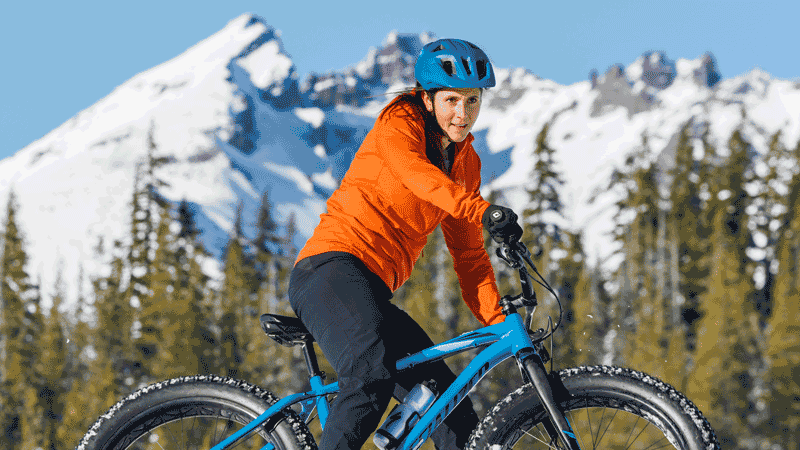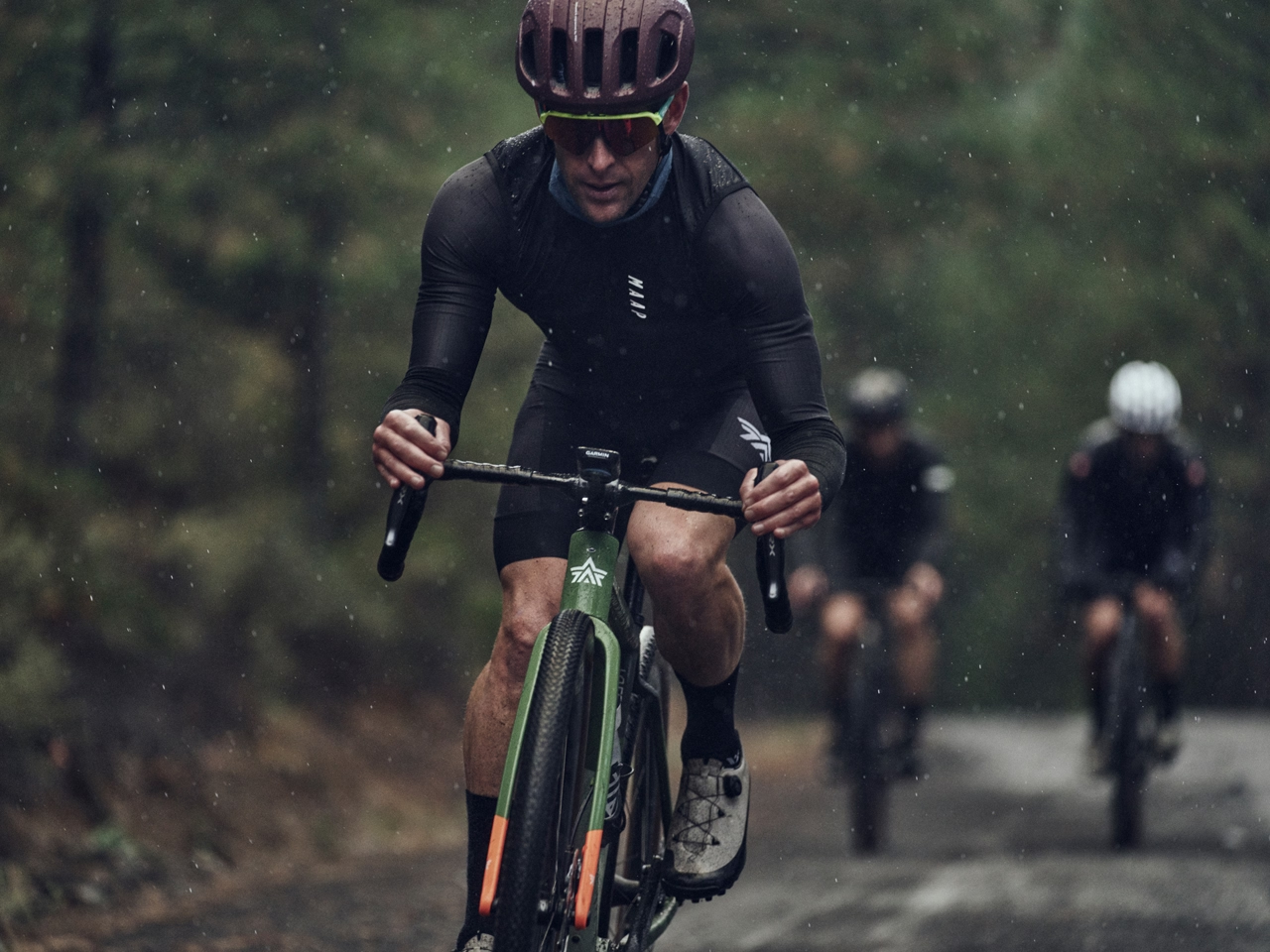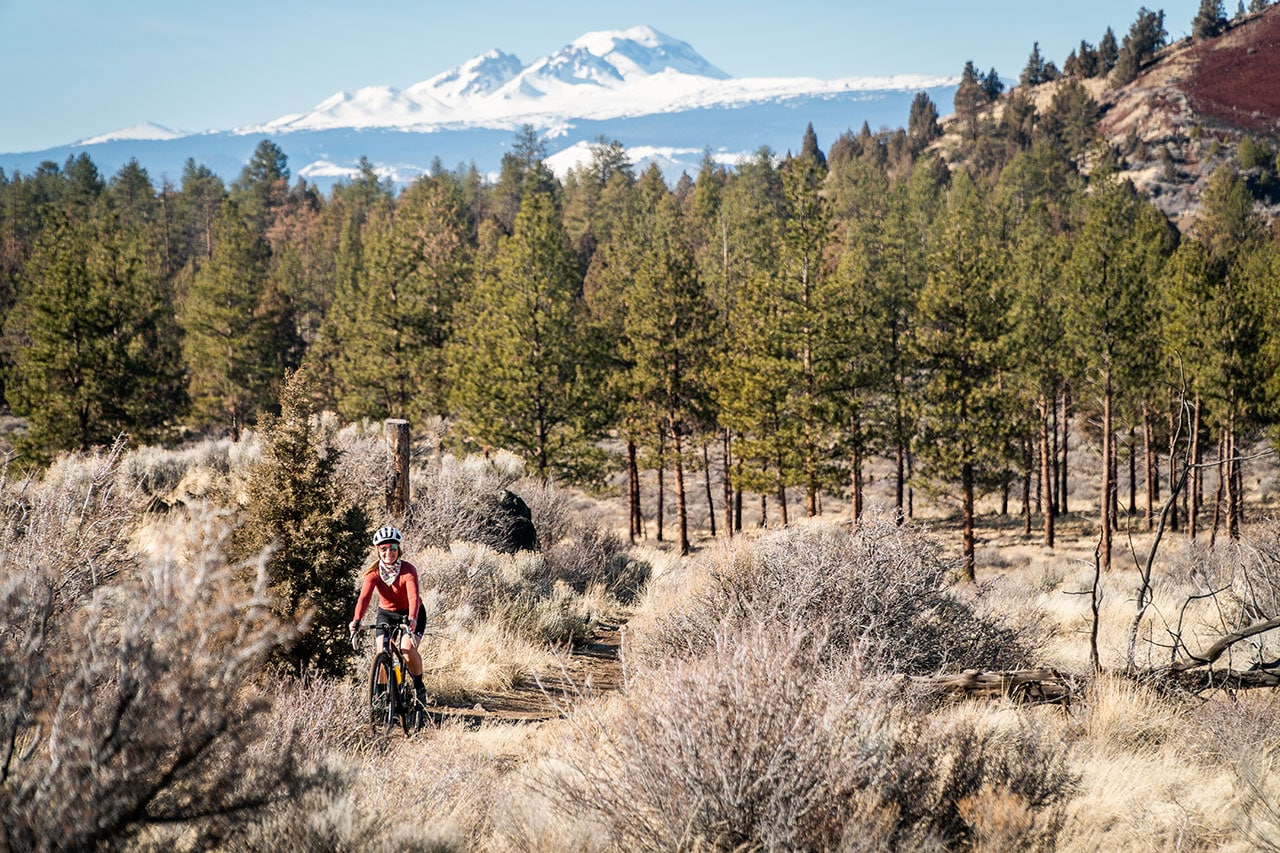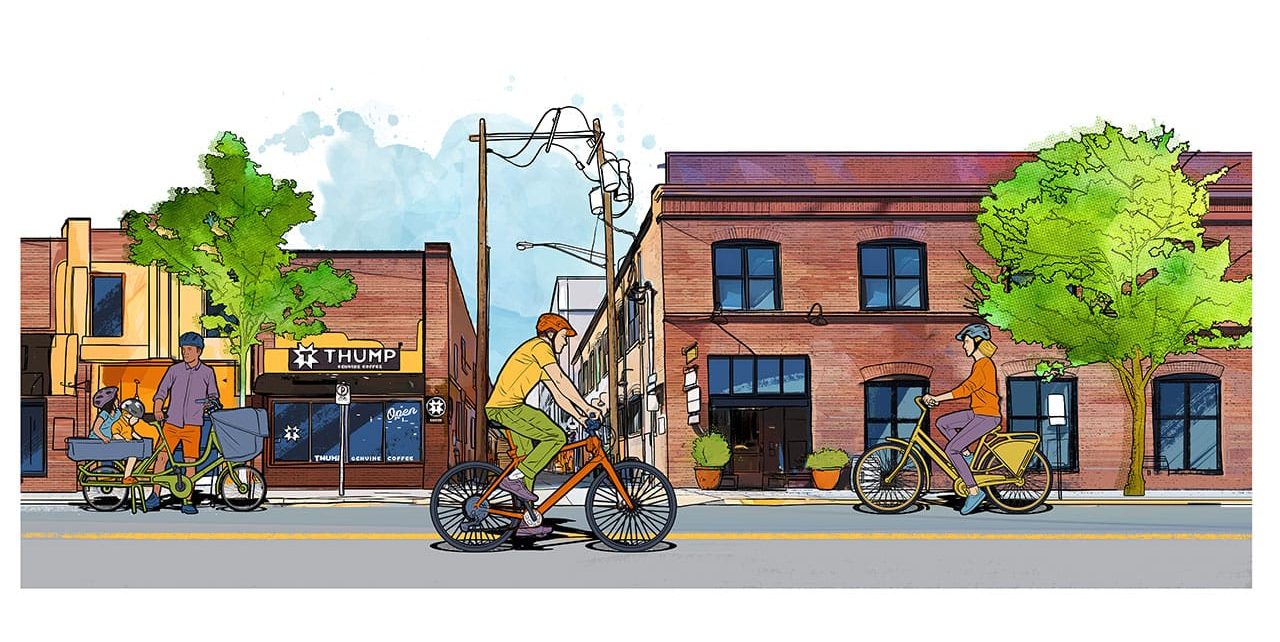Photo by Trevor Lyden
While more established winter pastimes such as Nordic and downhill skiing have surged in popularity in the past few years, fat biking is growing at a much slower pace, and that’s just fine with Central Oregon Trail Alliance winter trail steward Gary Meyer. Meyer is the leading champion of fat biking in Bend, and is responsible for the ongoing development of the Wanoga Snow Bike trails—a dedicated trail network offering nine miles of groomed trails. Meyer, an avid year-round cyclist, first found his passion for winter biking in Alaska, where fat biking originated. Meyer has taken this passion to the limits, competing in the Iditabike in 1988 on a custom bike and contributing to the development of the first fat bikes, which were only made commercially available in the mid-2000s. The sport is still in its teens, but all signs point to a growing following. Bend is the ideal place to give it a try.
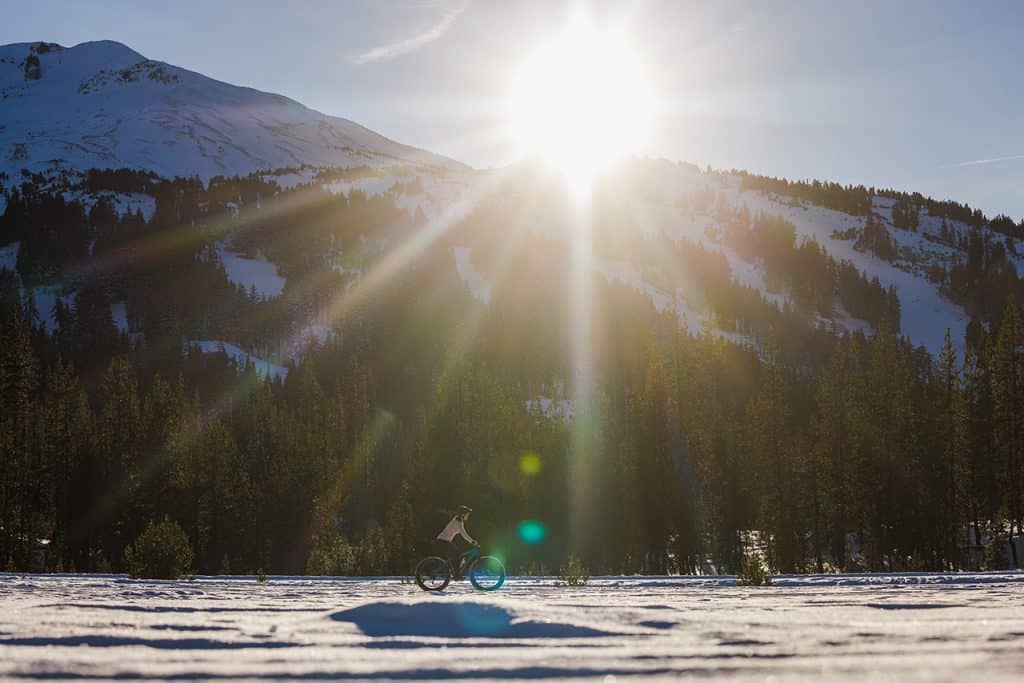
A fat bike is considered a specialized rigid mountain bike that can accommodate the 3.5-inch (or wider) tires used to maintain traction on the snow. Rentals are readily available, but Meyer cautions that your best bet for a positive inaugural fat biking experience is to go with an experienced rider or a guide. This ensures that you’re riding in the ideal and somewhat specific firmness of snow conditions. Meyer explains that the ideal conditions are basically the opposite of those for downhill skiing—you want hard and firm, not soft and deep—when the skiing is bad, the fat biking is good.
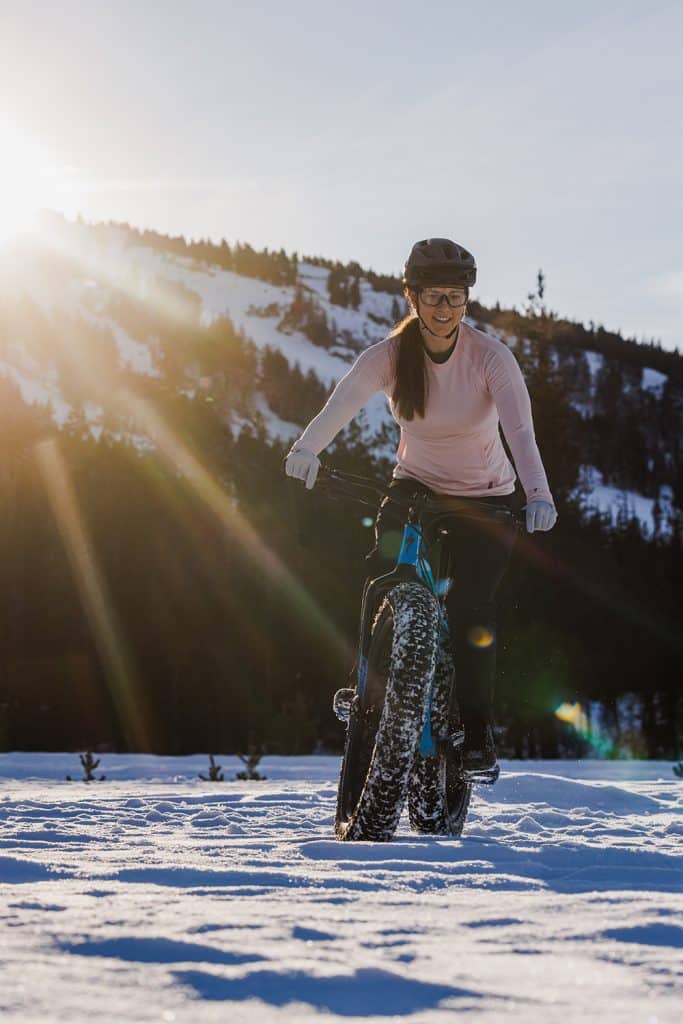
Locally, Cog Wild offers one-day guided rides for intermediate to advanced cyclists, during which you can expect to learn all the fundamentals, from how to dress for the sport to how to stay warm—and best practices, like deflating your tires to a low PSI. The location of the guided rides vary depending on snow conditions, from higher-elevation Tumalo Falls trails early in the season to lower-elevation rides, which can even include setting off directly from the Cog Wild offices at LOGE on Century Drive.
After mastering the basics, rent or buy a fat bike and set out to explore the trails. Central Oregon Fatbikes Facebook page is a resource for enthusiasts and boasts more than one thousand followers. Meyer is the lead communicator along with a lively group of participants who share details and photos of day-to-day conditions at trails near and far. Whether it’s a one-off adventure or the beginning of a new winter sport, explore Central Oregon on these trails with a fat bike on the snow.
Wanoga Snow Bike Trails
This pair of looped trails starts off at the Wanoga Sno-Park off Century Drive. Here, you’ll not only find the most consistent and quiet trail conditions (due to the lack of snowmobiles), but you’ll also meet the enthusiastic fat biking community and their dogs, which are welcome on the trails. The two loops are groomed by volunteers three times a week and are very well marked with great views—the inner loop is a short three-mile ride, and the outer loop clocks in at six miles. New this year, the inner Snowshoe Loop has been widened to accommodate adaptive fat cycles.
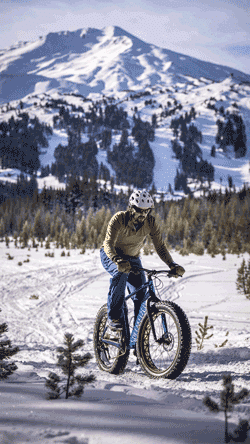
Parking: Non-motorized end of the Wanoga Sno-Park across from the sledding hill. Purchase a Sno-Park pass at the Cascade Lakes Welcome Station on Century Drive.
When: November 1 through April 1, conditions permitting.
Ticket To Ride
This accessible ride starts at the Cascade Lakes Welcome Station. In the summertime, it’s a popular family mountain bike trail due to the mellow elevation gain and relatively short six-mile loop, which earns it a green-level beginner designation. You can opt to ride the whole Ticket to Ride loop or just head out and back up the scenic canyon following the COTA signage. Be aware that this is a narrow, shared-use trail for snowshoers and Nordic skiers.
Parking: The Cascade Lakes Welcome Station on Century Drive, where you can purchase a Sno-Park pass.
When: Meyer suggests waiting until snowshoers and skiers have packed down the trail’s snow after fresh powder falls.
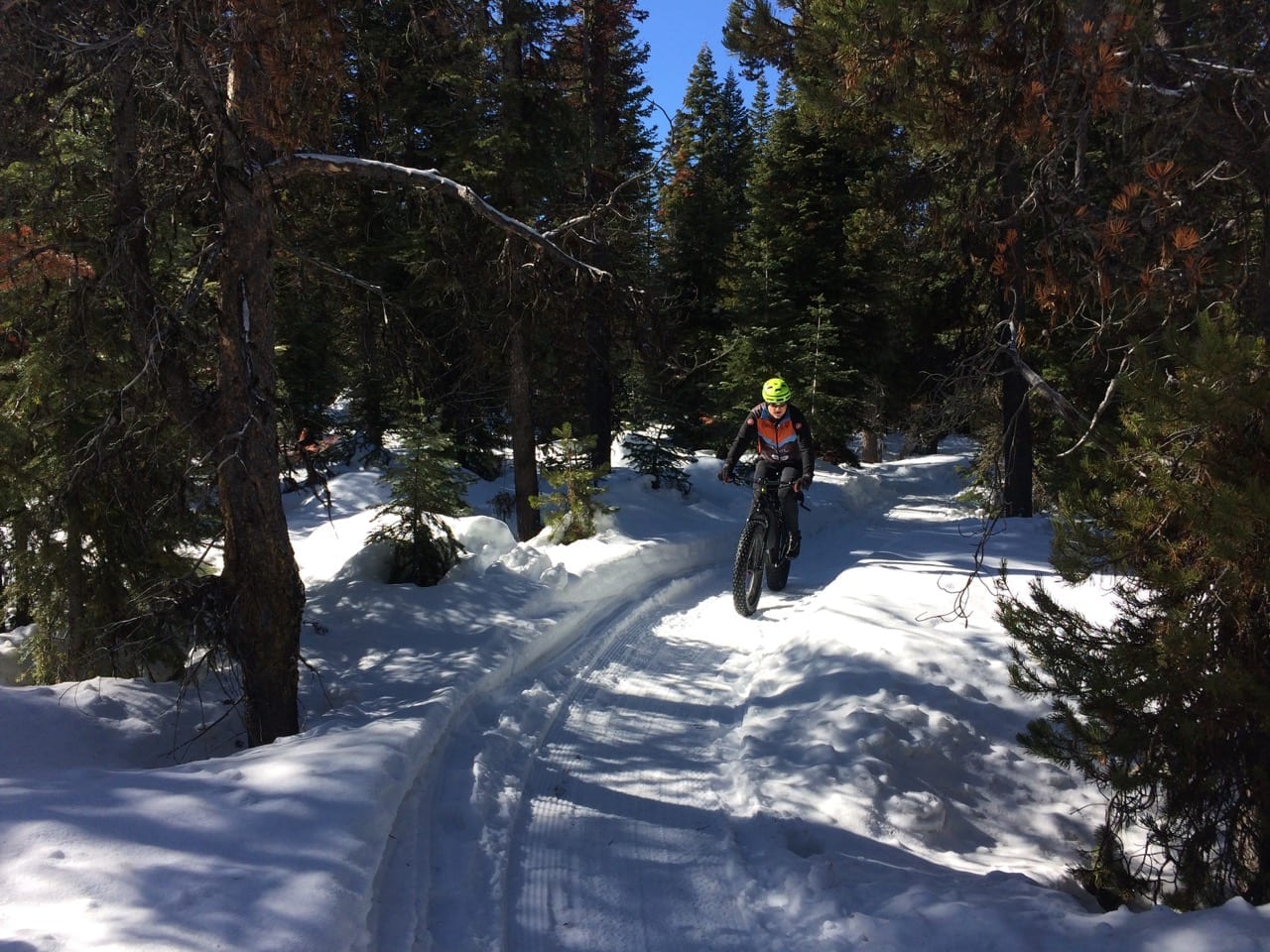
Tumalo Falls
This trail embarks from the Skyliners Sno-Park and ends at the Tumalo Falls Viewpoint—a stunning sight draped in winter white. Do this as a loop or as an out-and-back ride. The Tumalo Creek Trail is a three-mile ride up to the falls, from here you can either ride back down the trail or loop back on the snow-packed road. You may opt to ride up and back on the road, which is closed to cars in the winter. This popular trail is also used by snowshoers and skiers, so be sure to yield right of way.
Parking: Skyliners Sno-Park off Skyliner Drive. Purchase a Sno-Park pass in advance.
When: Meyer suggests heading out to this popular trail on weekdays to avoid the crowds.
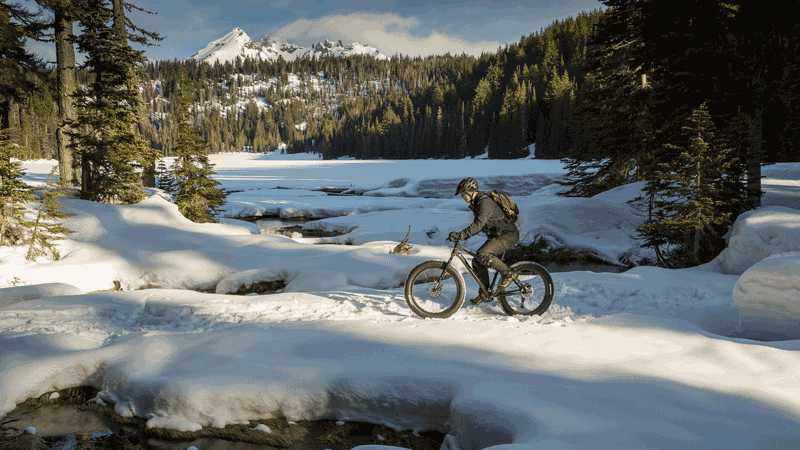
Dutchman Flat Sno-Park
Close to Bachelor, Dutchman Flat Sno-Park is a good basecamp for fat biking, as there are lots of trails to choose from. You can ride on the groomed snowmobile trails here (note: snowmobiles have the right of way on these trails). A popular route for fat bikes is the three-mile loop that leads to Todd Lake.
Parking: Dutchman Flat Sno-Park. Sno-Park permit required. The lot fills up fast, so get there early in the day.
When: Beginning November 1, but check snow conditions before you go.
Phil’s Trail Network
If you’re familiar with the area for mountain biking, Phil’s Trail Network is a good place to go for fat biking when there’s snow. Rekward cautions that the trails can get muddy if you don’t get there early after a snowfall. He recommends the middle trails: Storm King, lower loops and Skyliner’s.
Parking: There’s usually plenty of parking available at the Phil’s Trailhead parking lot.
When: Check snow conditions before you go.
Rent a bike and get geared up for winter riding at local businesses including:
Between Evergreens – 541.728.0066
Hutch’s Bicycles – 541.382.9253
Pine Mountain Sports – 541.385.8080
Sunnyside Sports – 541.382.8018
New to Fat Tire Biking?
Local companies also offer fat biking tours in winter, but you can also rent your own bike to ride on trails around Bend. “You can still ride fat bike, but it’s condition dependent,” said Bend Trails partner Robert Rekward. “The good rides for me have been the day after if snowed. All the trails are really good the morning after a snow.”
A couple tips: Always check snow conditions before you go, especially considering this year’s low snowpack. You want to ride on packed snow, and the Central Oregon Trail Alliance (COTA) asks that bikers stay off trails when they get muddy because you can damage the trails. Stay seated on the bike, and don’t be afraid of sliding around on the snow. It might take some time to get comfortable riding on the snow. Most trails require that your tires are at least 3.8” wide to ride on the trails. Fat bikes are allowed on groomed snowmobile trails, but are not allowed on Nordic ski trails.
Click here to read more biking stories with us, or head over to read past OUTDOORS adventure stories.

